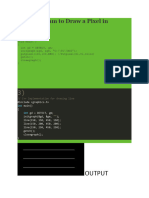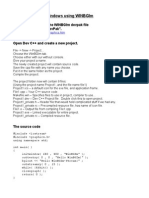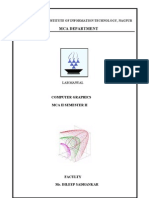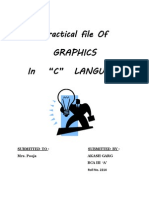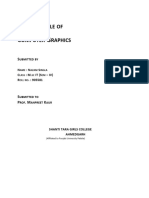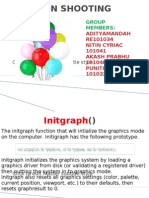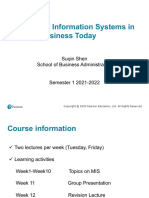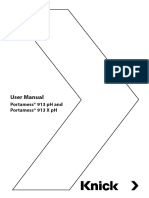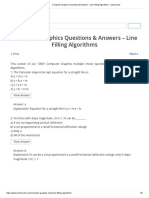0% found this document useful (0 votes)
78 views12 pagesCGR Microproject
The document provides an overview of computer graphics, including definitions of pixels and graphics, as well as a basic graphics pipeline. It details the software and hardware requirements for coding, specifically using the Turbo C++ compiler, and includes sample code for creating a color-changing tree animation. Additionally, it outlines the algorithm for the animation program and lists references for further reading.
Uploaded by
forcourseloginCopyright
© © All Rights Reserved
We take content rights seriously. If you suspect this is your content, claim it here.
Available Formats
Download as PDF, TXT or read online on Scribd
0% found this document useful (0 votes)
78 views12 pagesCGR Microproject
The document provides an overview of computer graphics, including definitions of pixels and graphics, as well as a basic graphics pipeline. It details the software and hardware requirements for coding, specifically using the Turbo C++ compiler, and includes sample code for creating a color-changing tree animation. Additionally, it outlines the algorithm for the animation program and lists references for further reading.
Uploaded by
forcourseloginCopyright
© © All Rights Reserved
We take content rights seriously. If you suspect this is your content, claim it here.
Available Formats
Download as PDF, TXT or read online on Scribd
/ 12


















